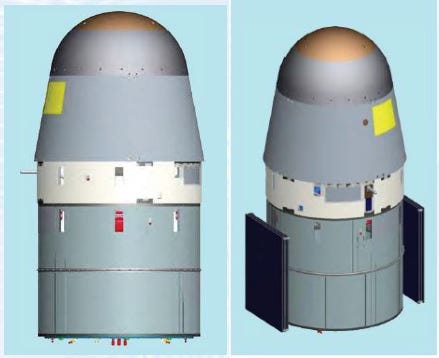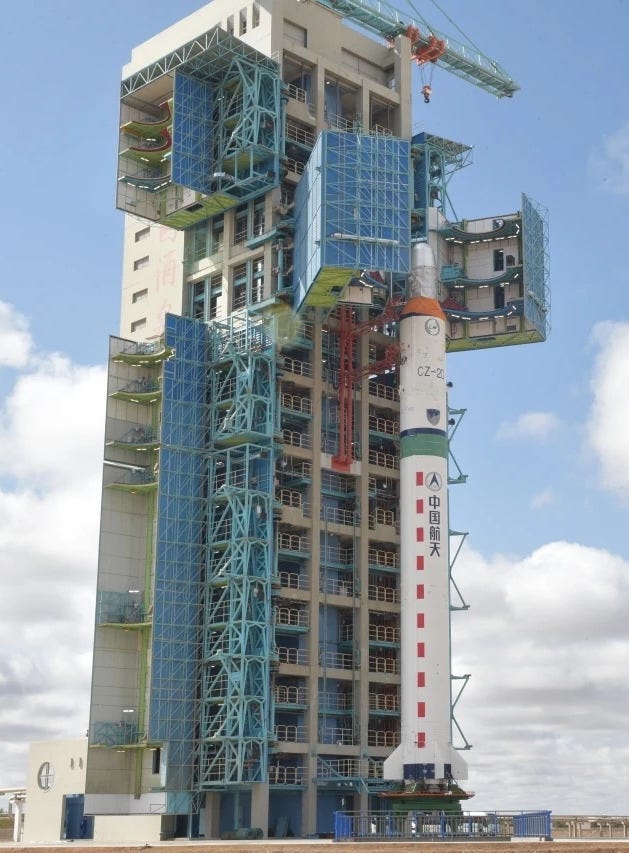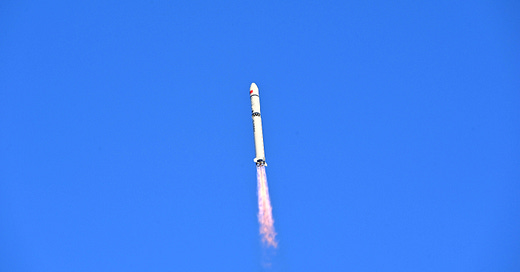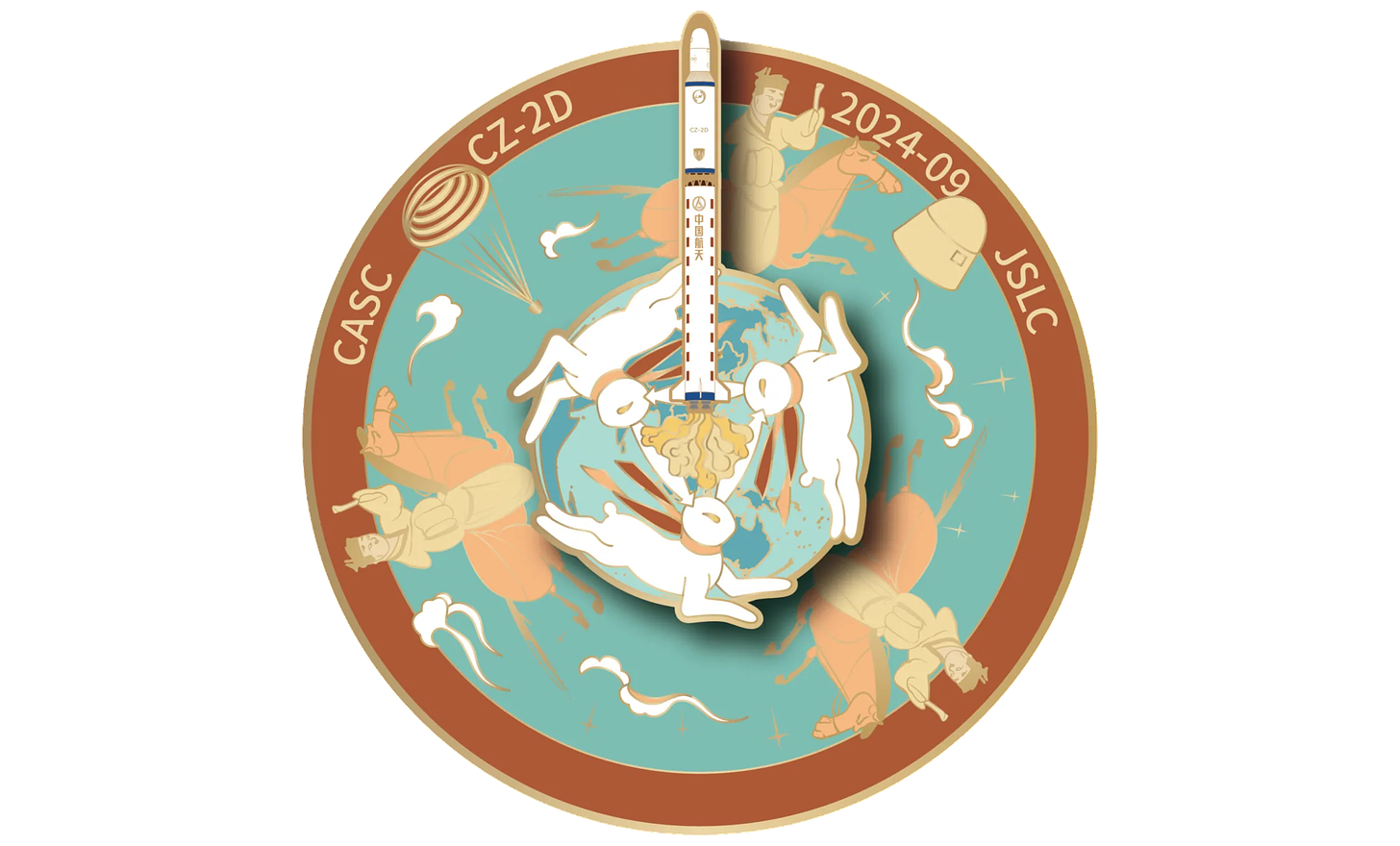China's first reusable satellite launched! [Long March 2D Y78]
The Shijian-19 returnable and reusable satellite was carried into orbit by a Long March 2D.
Another Long March 2D lifted off this September, this time from Launch Site 4 at the Jiuquan Satellite Launch Center. Liftoff occurred on September 27th at 18:30 pm China Standard Time, or 10:30 am Universal Coordinated Time, with the vehicle heading for low Earth orbit.
The Shijian-19 satellite was riding atop of the Long March 2D as the sole payload for the launch.
Shijian-19 (实践十九号) is stated as being China’s first returnable and reusable satellite, mainly the capsule that will survive atmospheric reentry. Shijian-designated spacecraft are flown to figure out best operational practices, with the name literally translating to Practice in English. Shiyan (实验) is a similar satellite designation used for technology development spacecraft, and the name literally translates to Experiment.
In orbit, the spacecraft is expected to conduct science experiments related to life sciences, microgravity physics, along with research into and the improvement of plant seeds. The Ministry of Agriculture and Rural Affairs, Hainan Province, and Anhui Province provided the seeds aboard the spacecraft. Five countries are believed to have experiments onboard Shijian-19, but only Thailand and Pakistan were stated.

China has previously flown thirty recoverable satellites, but none were reusable. When Shijian-19 returns in the coming weeks it’s expected to have proven technologies to lower the cost of in-space experiments and manufacturing. The spacecraft is also believed to be a demonstration mission ahead of launches of the fifth-generation Fanhui Shi Weixing (返回式卫星) satellites.
The Tiangong Space Station conducts similar microgravity experiments, however there are only three opportunities to launch experiments each year, with only two chances to return with the results six months apart. Some experiments may also want, or need, a more controlled environment not offered on the space station.
Advances with reusable satellites will likely help China’s various state-owned space contractors improve processes ahead of the refurbishment of Mengzhou capsules, as the in-development crewed spacecraft also has plans to be reused.
The China Academy of Space Technology is reported to have developed the Shijian-19 spacecraft.
This launch was the 537th launch of a Long March rocket overall, the 92nd launch of a Long March 2D, and the 219th Long March vehicle launch from the Shanghai Academy of Spaceflight Technology, as well as the 46th launch from China this year.
Liftoff video via 北京蓝龙 on Weibo.
As of writing (September 27th), the Y number for this launch is believed to be Y78, this may change if clarified by the manufacturer.
Chinese companies, state-owned and private, use Y followed by a number to serialize launch mission numbering, similar to NASA with STS.
Check out the previous Long March 2D launch
What is the Long March 2D?
This section is for those less familiar with China's Long March series of launch vehicles.
The Long March 2D is also one of the oldest launch vehicles from China performing missions regularly to low earth and sun-synchronous orbits by the Shanghai Academy of Spaceflight Technology, as a two-stage version of the Long March 4 vehicles. The two stages of the launch vehicle both burn Dinitrogen Tetroxide and Unsymmetrical Dimethylhydrazine.

The payload capacity of the launch vehicle is currently as follows:
3,500 kilograms to low Earth orbit
1,300 kilograms to a sun-synchronous orbit
The first-stage is powered by four YF-21C engines, which generate 302 tons of thrust burning Dinitrogen Tetroxide and Unsymmetrical Dimethylhydrazine. The second-stage is powered by a single YF-22C engine and four YF-23C verniers that generate 80 tons of thrust while also burning Dinitrogen Tetroxide and Unsymmetrical Dimethylhydrazine.
On the launch pad, the Long March 2D is 41.05 meters tall and weighs 232,250 kilograms when fully fuelled. The first and second stages have a diameter of 3.35 meters, with the fairing having a diameter of either 3.35 or approximately 4 meters.
So far the Long March 2D has flown from all three inland launch sites, the Jiuquan Satellite Launch Center, the Taiyuan Satellite Launch Center, and the Xichang Satellite Launch Center.







![There's a launch in the fog! [Long March 2D Y99]](https://substackcdn.com/image/fetch/w_1300,h_650,c_fill,f_auto,q_auto:good,fl_progressive:steep,g_auto/https%3A%2F%2Fsubstack-post-media.s3.amazonaws.com%2Fpublic%2Fimages%2F3d1a8b8d-eeb1-4714-968e-3f2ed652a877_5472x3382.jpeg)